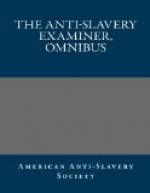One of the most worthy and devoted men whom we met in Barbadoes was the Rev. Mr. Cummins, curate of St. Paul’s church, in Bridgetown. The first Sabbath after our arrival at the island we attended his church. It is emphatically a free church. Distinctions of color are nowhere recognized. There is the most complete intermingling of colors throughout the house. In one pew were seen a family of whites, in the next a family of colored people, and in the next perhaps a family of blacks. In the same pews white and colored persons sat side by side. The floor and gallery presented the same promiscuous blending of hues and shades. We sat in a pew with white and colored people. In the pew before and in that behind us the sitting was equally indiscriminate. The audience was kneeling in their morning devotions when we entered, and we were struck with the different colors bowing side by side as we passed down the aisles. There is probably no clergyman in the island who has secured so perfectly the affections of his people as Mr. C. He is of course “no bishop’s man.” He is constantly employed in promoting the spiritual and moral good of his people, of whatever complexion. The annual examination of the Sabbath school connected with St. Paul’s occurred while we were in the island, and we were favored with the privilege of attending it. There were about three hundred pupils present, of all ages, from fifty down to three years. There were all colors—white, tawny, and ebon black. The white children were classed with the colored and black, in utter violation of those principles of classification in vogue throughout the Sabbath schools of our own country. The examination was chiefly conducted by Mr. Cummins. At the close of the examination about fifty of the girls, and among them the daughter of Mr. Cummins, were arranged in front of the altar, with the female teachers in the rear of them, and all united in singing a hymn written for the occasion. Part of the teachers were colored and part white, as were also the scholars, and they stood side by side, mingled promiscuously together. This is altogether the best Sabbath school in the island.
After the exercises were closed, we were introduced, by a colored gentleman who accompanied us to the examination, to Mr. Cummins, the Rev. Mr. Packer, and the Rev. Mr. Rowe, master of the public school in Bridgetown. By request of Mr. C., we accompanied him to his house, where we enjoyed an interview with him and the other gentlemen, just mentioned. Mr. C. informed us that his Sabbath school was commenced in 1833; but was quite small and inefficient until after 1834. It now numbers more than four hundred scholars. Mr. C. spoke of prejudice. It had wonderfully decreased within the last three years. He said he could scarcely credit the testimony of his own senses, when he looked around on the change which had taken place. Many now associate with colored persons, and sit with them in the church, who once




